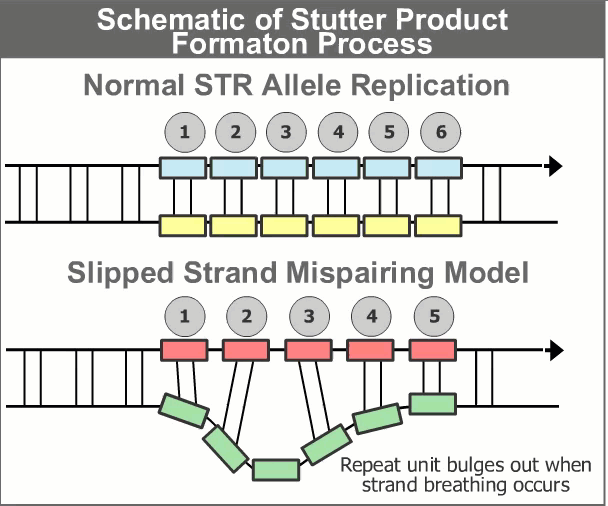Archival Notice
This is an archive page that is no longer being updated. It may contain outdated information and links may no longer function as originally intended.
Home | Glossary | Resources | Help | Contact Us | Course Map
Primers should contain fewer than 4 complementary bases especially at the 3' end. Complementarity between two primers, especially at the 3' ends, can lead to the formation of product artifacts arising from amplified primer-dimers and primer-oligomers. The concentration of primers is much higher than that of target DNA in PCR. Therefore, if the primers exhibit self-complementarity they may hybridize to each other and form homo-dimers or hetero-dimers.
Avoiding primers with 3' overlaps is extremely important in multiplex reactions.
- A self-dimer is formed due to intermolecular interactions of the same primer.
- A cross dimer is formed due to intermolecular interaction between sense and antisense primers.
In order to detect cross dimers, the sense primer in 5' - 3' direction is compared with the antisense primer in 3' - 5' direction for homology.
Additional Online Courses
- What Every First Responding Officer Should Know About DNA Evidence
- Collecting DNA Evidence at Property Crime Scenes
- DNA – A Prosecutor’s Practice Notebook
- Crime Scene and DNA Basics
- Laboratory Safety Programs
- DNA Amplification
- Population Genetics and Statistics
- Non-STR DNA Markers: SNPs, Y-STRs, LCN and mtDNA
- Firearms Examiner Training
- Forensic DNA Education for Law Enforcement Decisionmakers
- What Every Investigator and Evidence Technician Should Know About DNA Evidence
- Principles of Forensic DNA for Officers of the Court
- Law 101: Legal Guide for the Forensic Expert
- Laboratory Orientation and Testing of Body Fluids and Tissues
- DNA Extraction and Quantitation
- STR Data Analysis and Interpretation
- Communication Skills, Report Writing, and Courtroom Testimony
- Español for Law Enforcement
- Amplified DNA Product Separation for Forensic Analysts


